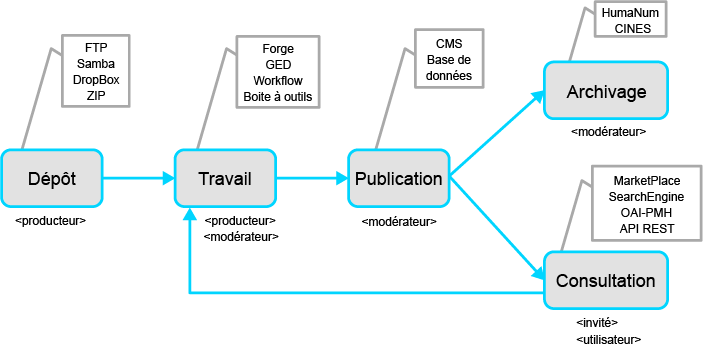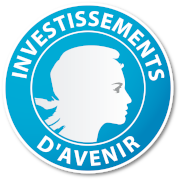The Publishing Workflow is a 5-step process and hosting, storing and archiving resources are only part of this. The initial deposit and formatting phases are also crucial.
First, the producer deposits and formats the resource. Not all files and metadata resulting from research projects are ready to be published as is because they may not necessarily correspond with the platform’s publication or archiving constraints. The producer formats the data in close collaboration with the platform administrators. When the objects are ready to be published, the durability of the data may then be guaranteed. If producers later complete their work, they can publish new versions of the same resources and may also submit their resources for long-term archiving.
Depositing
ORTOLANG provides a simple way for producers to deposit data even if these are not ready to be published.
Different methods are available for depositing or uploading data:
- via FTP
- via a web interface
- by uploading compressed files (ZIP)
Once deposited, the resources are secured by the use of reliable media (redundancy) and making daily tape backups.
Workspace
Producers can work on their data via an online workspace or an API. This workspace is secure and work is saved daily. Access to the workspace is controlled and the data deposited is only visible to the workspace’s members and the platform administrators.
Publishing
Once the data are ready, producers can submit their work for publication. They can then track the status of their requests and work in collaboration with the administrators to successfully obtain a stable version of their resources. Several forms of publishing are possible (access for all, restricted access, private access).
Archiving
Published data may be submitted for archiving and/or simple consultation. Automatic data enrichment occurs during the previous phases and produces data in a valid archiving format.
Consultation
Data can be consulted in several ways:
- via a web interface that presents all the hosted resources divided into categories and described by a detailed indexing summary
- online browsing through the content of the resources is also possible
- an indexing engine
- an OAI-PMH connector
- a REST API
The automatic data enrichment carried out during the previous phases provides homogeneous data. Producers can also complete their work and publish a new version of the same resource, enriched with data.



